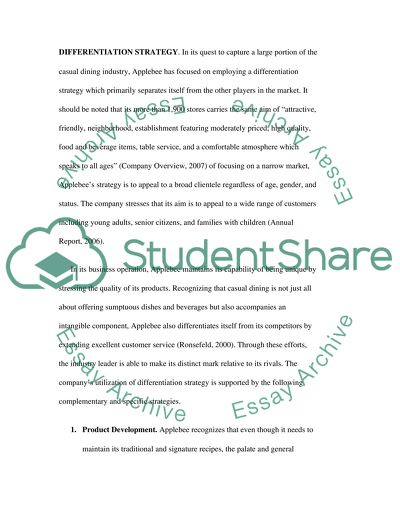Cite this document
(“Applebee's strategy (some parts) Essay Example | Topics and Well Written Essays - 2500 words”, n.d.)
Applebee's strategy (some parts) Essay Example | Topics and Well Written Essays - 2500 words. Retrieved from https://studentshare.org/miscellaneous/1540636-applebees-strategy-some-parts
Applebee's strategy (some parts) Essay Example | Topics and Well Written Essays - 2500 words. Retrieved from https://studentshare.org/miscellaneous/1540636-applebees-strategy-some-parts
(Applebee'S Strategy (some Parts) Essay Example | Topics and Well Written Essays - 2500 Words)
Applebee'S Strategy (some Parts) Essay Example | Topics and Well Written Essays - 2500 Words. https://studentshare.org/miscellaneous/1540636-applebees-strategy-some-parts.
Applebee'S Strategy (some Parts) Essay Example | Topics and Well Written Essays - 2500 Words. https://studentshare.org/miscellaneous/1540636-applebees-strategy-some-parts.
“Applebee'S Strategy (some Parts) Essay Example | Topics and Well Written Essays - 2500 Words”, n.d. https://studentshare.org/miscellaneous/1540636-applebees-strategy-some-parts.


